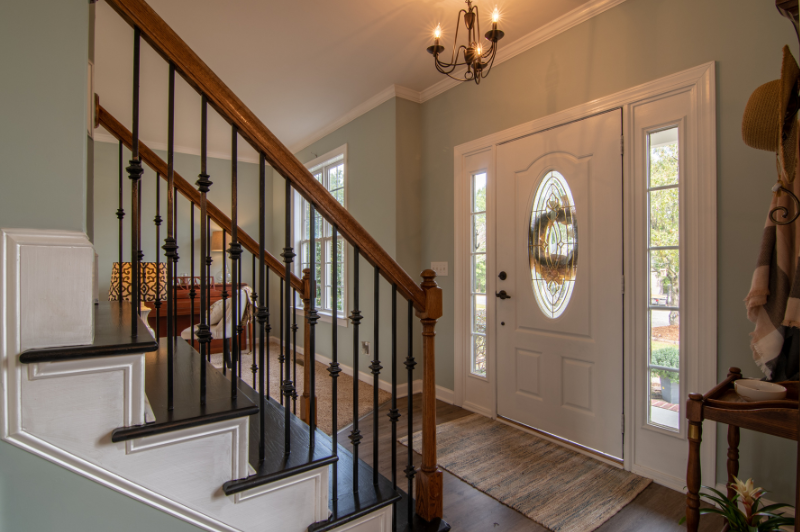As our loved ones age, ensuring their safety becomes a top priority. Creating a secure and comfortable living environment is essential to promote their well-being and independence. As caregivers of elderly parents or loved ones, we have the responsibility to safeguard their homes and minimize potential risks. In this blog post, we will explore key statistics and share 10 valuable tips to help you enhance home safety for aging adults, providing them with a safe haven.
Before we dive into the practical tips, let’s take a look at some statistics that highlight just how crucial home safety is for aging adults:
- According to the National Council on Aging (NCOA), falls are the leading cause of fatal injuries and non-fatal hospital admissions among seniors.
- The Centers for Disease Control and Prevention (CDC) reports that one in four Americans aged 65 and older falls each year.
- The NCOA estimates that modifications and interventions to prevent falls can save approximately $19,000 per person in medical costs.
Now, equipped with these statistics, let’s explore actionable tips to create a safer home environment for your aging loved ones:
Clear the Clutter:
Start by removing any unnecessary objects or furniture that could obstruct walkways. Keep floors free from clutter, including cords and throw rugs, which can cause tripping hazards. Encourage your loved one to tidy up regularly and dispose of any unnecessary items.
Adequate Lighting:
Ensure that all areas of the home are well-lit, especially stairways, hallways, and entrances. Install brighter bulbs or consider using motion sensor lights to provide automatic illumination. Regularly check and replace bulbs as needed.
Bathroom Safety:
Install grab bars near toilets and in the shower or bathtub area to aid balance and prevent falls. Place non-slip mats on the floor to reduce the risk of slipping. You may consider adding a raised toilet seat and a shower chair for added convenience and safety. However, a common mistake we see from our clients is that they buy products that don’t fit or aren’t considered safe because they didn’t know their options, and didn’t have someone helping them. We strongly advise speaking to a professional to discuss the different products and solutions available because not ALL options are necessarily the safest for each person/home.
Secure Handrails:
Install sturdy handrails on both sides of staircases to provide support while going up or down. Regularly check the handrails’ stability and make repairs if necessary. If your loved one has difficulty navigating stairs, consider installing a stairlift or creating a bedroom on the ground floor.
Secure Carpets and Rugs:
Secure carpets and rugs firmly to the floor using double-sided tape or slip-resistant backing. This prevents them from sliding and causing accidents. Remove any loose or frayed edges that could become tripping hazards.
Fire Safety:
Install smoke detectors on each floor of the house and test them regularly. Place a fire extinguisher in an easily accessible location and ensure your loved one knows how to use it. Develop a fire escape plan and practice it together.
Kitchen Precautions:
Organize frequently used items within easy reach. Remove or secure loose cords from appliances. Install a stove shut-off device that automatically turns off the stove after a certain period of inactivity. Make sure your loved one understands kitchen safety, such as using oven mitts and avoiding loose clothing near the stove.
Prevent Poisoning:
Carbon monoxide is an invisible killer. Make sure there is a carbon monoxide detector near every bedroom, and create a schedule to test/replace the detector’s battery twice a year. It’s also a good idea to have any fuel burning appliances (including furnaces and chimneys) professionally inspected once a year to ensure nothing is leaking poisonous carbon monoxide.
Fall-Proof Bathrooms:
Consider installing a walk-in bathtub or shower with built-in seating to minimize the risk of falls. Install handrails in the bathing area for added support. Place slip-resistant mats both inside and outside the bathing area to prevent slipping. Keep essential toiletries within easy reach.
Emergency Planning:
Develop a comprehensive emergency plan that includes contact information for emergency services, neighbors, and nearby family members. Keep a list of important medical information readily available, including allergies, medications, and healthcare providers’ contact details. Regularly review and update the emergency plan as needed.
By implementing these practical tips, you can significantly reduce the risk of accidents and create a safe haven for your aging loved ones. Home safety modifications and proactive measures not only enhance their well-being but also provide peace of mind for caregivers. Remember, a secure living environment empowers seniors to maintain their independence and enjoy aging in place.
If you are experiencing difficulties or needing home safety assistance for your loved one, it may be time for professional support. CareAparent can be your trusted partner, ensuring your loved one remains active, healthy, and safe in the comfort of their own home. We provide complimentary consultations and would be happy to talk through our home care solutions. Call 651.702.HOME (4663), or contact us online! We’re here to help you navigate this journey with care and compassion.
SOURCES
- Facts About Falls. Centers for Disease Control and Prevention. Injury Prevention and Control. Found on the internet at https://www.cdc.gov/falls/facts.html
- Get the Facts on Falls Prevention. National Council on Aging. Found on the internet at https://ncoa.org/article/get-the-facts-on-falls-preventions
- Falls Prevention Programs: Saving Lives, Saving Money Infographic. National Council on Aging. Found on the internet at https://ncoa.org/article/falls-prevention-programs-saving-lives-saving-money-infographic

